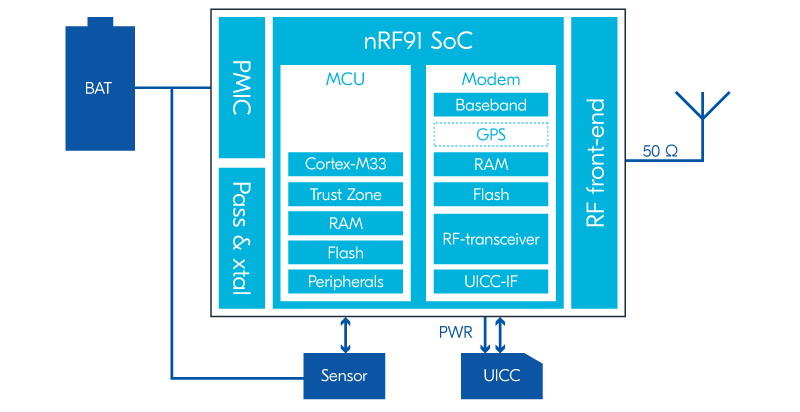The nRF9160 System in Package (SiP) has a dedicated application processor, Long-Term Evolution (LTE) modem, and memory tightly integrated into a System on Chip (SoC) with unified power and clock management.
Compared to traditional cellular Internet of Things (IoT) architecture which has a separate MCU, cellular modem, and serial memory interface, the integrated SoC reduces the communication time between devices, the power used in external interfaces, and the total hardware complexity.

You can have everything running on nRF9160 as a single-chip implementation or you can add nRF9160 as a coprocessor in a larger or more specialized design, where nRF9160 handles communication and low-power or system tasks while the main or specialized CPU sleeps.
You can also use nRF9160 only as a modem if you have a design with older cellular modem technologies (2G or 3G) and want to quickly switch over to LTE-M or Narrowband Internet of Things (NB-IoT). Running the Serial LTE Modem application on the application processor enables you to communicate with the nRF9160 modem using only AT commands. This lets you introduce the technology into your designs, and allows you at a later stage to migrate your whole application into the nRF9160's application space to optimize your design for low power, device size, Bill of Materials (BOM), support, and supply chain.
- Are you going to utilize the nRF9160 SiP as a single chip implementation?
- How important is BOM, device size, and low power for your application?